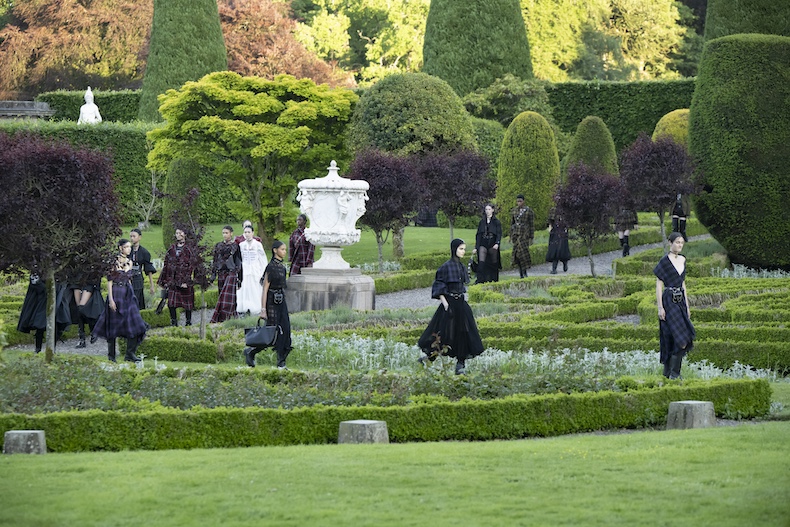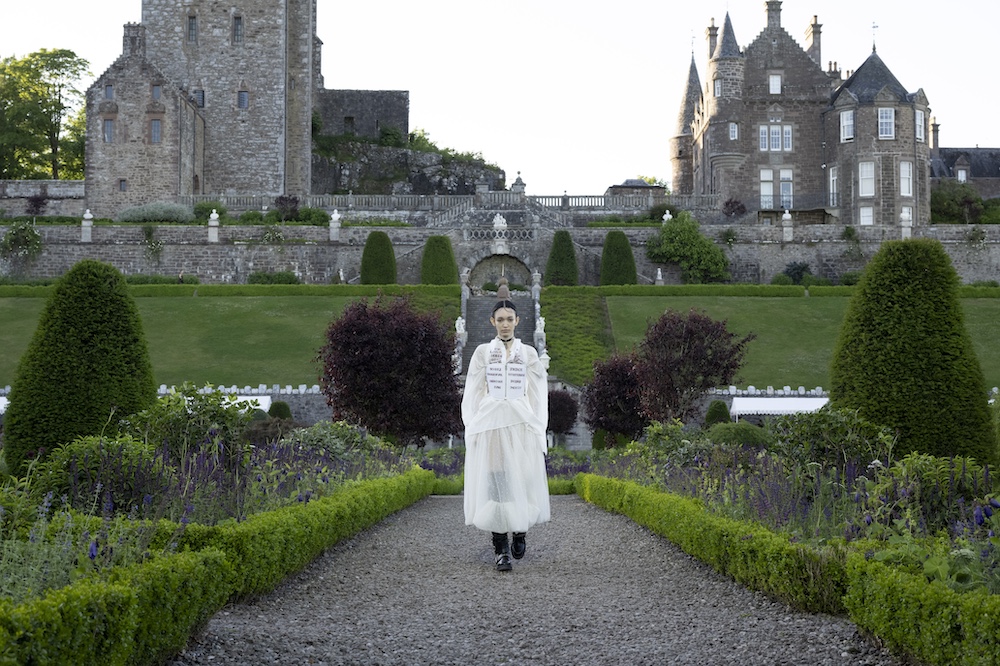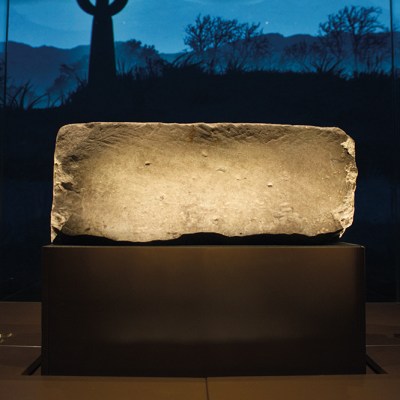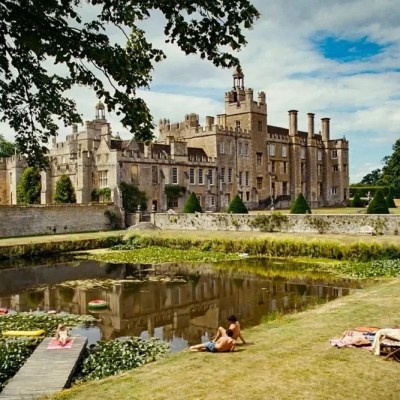Rakewell, Apollo’s wandering eye on the art world, takes a rakish look at art and museum stories.
Scotland is not a large nation. With a population of 5.5 million, its position as an arbiter of international luxury taste could be seen as surprising. But then it has always had a surprising influence on the world’s stage – tartan, curling and lino, to name a few of the country’s contributions to culture. One more example to join these glittering ranks is Drummond Castle, the gardens of which are exceptionally beautiful. They are a 19th-century version of a garden that dates to before 1745 – for obvious reasons, which we’ll get to later.
Pleasingly, the start of June has seen the garden come into its own as the site of megabrand Dior’s latest cruise collection – the runway shows that take place between the spring/summer and autumn/winter ones. You can see the thinking. They’d done Lecce, Seville, Athens (in front of the Acropolis, no less), so Perthshire was the natural next step.
The formal gardens hit a rough patch from 1745 because of the small matter of the confiscation of lands after the Jacobite rising, which took place that year. The castle belonged to the Drummonds, a distinctly Stuart-supporting family. The second Earl was privy counsellor to James VI (known as James I south of the border) and Charles I.
Models on the runway at the Dior Cruise 2025 Show at Drummond Castle in Perthshire, Scotland. Photo: Yannis Vlamos/WWD via Getty Images

The question is, did Dior’s creative director Maria Grazia Chiuri know about the garden’s storied past when she selected it for the site of her most recent fashion show? Sure, Christian Dior had a ‘relationship’ with Gleneagles, by which we think they mean, ‘put on a catwalk show’ there at the request of the Glasgow-based charity Friends of France in 1955. Dior himself was very taken by the Scottish dancing at the end of the show; ‘It looked wonderful,’ he said, ‘but beneath the frenzied stampings of the dancers, the floor shook and bounced, and we were all nervous that it would collapse.’
Was Chiuri aware that her Tartan-clad models were treading fields of dissent? The show opened to the drone of a single bagpipe and the models were led in by a lone piper. It closed with an entire band of pipers. It certainly felt like a version of history was being evoked. But as more observant members of the audience will have spotted, the garden has not only appeared in STARZ’s outlandish fantasy Outlander but, more importantly, in the film Rob Roy (1995 – a full four months before Braveheart) starring Liam Neeson as the eponymous anti-English hero, the original member of the Jacobite risings. Jessica Lange appears as his wife but oddly seems to be aping Neeson’s own Irish accent rather than a Scottish one. John Hurt is the hated English duke and Tim Roth plays his henchman. While the film contains many a vision of heroic swashing and buckling (as the trailer intones, ‘You’ll never know the meaning of courage till you know the story of Rob Roy’), it also contains one of the most grotesque duel scenes committed to film. Perhaps Dior is hoping we don’t dwell too much on the past but instead enjoy the pretty clipped hedges in the garden and choose Scotland as a perfect Instagram background.
Got a story for Rakewell? Get in touch at rakewell@apollomag.com or via @Rakewelltweets.




